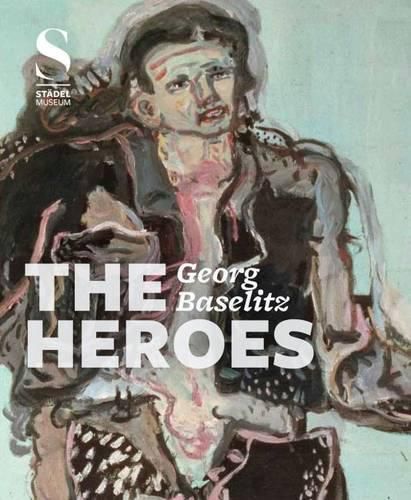Readings Newsletter
Become a Readings Member to make your shopping experience even easier.
Sign in or sign up for free!
You’re not far away from qualifying for FREE standard shipping within Australia
You’ve qualified for FREE standard shipping within Australia
The cart is loading…






In 1965/66 Georg Baselitz created the monumental series The Heroes and New Types , which he presented in wild colour and with defiant style. By turning his attention towards the tradition of representational painting his work formed a striking contrast to the trends towards abstraction and Expressionism prevailing during the 1960s, thereby embarking on his own unique path. In his sceptical basic attitude towards post-war Germany Baselitz (* 1938) emphasised in his works the ambivalent aspects of the present in which he lived. His Heroes appear correspondingly contradictory with their military fatigues in tatters, their failure as deeply engraved as their resignation. The contrast to the success story of Western Germany’s economic miracle could hardly be more sharply defined, but there is more at stake: with this group of works the artist reflected his own position in relation to society. It was the artist’s self-assertion and determination of identity that were at stake and that Baselitz formulated so forcefully.
$9.00 standard shipping within Australia
FREE standard shipping within Australia for orders over $100.00
Express & International shipping calculated at checkout
In 1965/66 Georg Baselitz created the monumental series The Heroes and New Types , which he presented in wild colour and with defiant style. By turning his attention towards the tradition of representational painting his work formed a striking contrast to the trends towards abstraction and Expressionism prevailing during the 1960s, thereby embarking on his own unique path. In his sceptical basic attitude towards post-war Germany Baselitz (* 1938) emphasised in his works the ambivalent aspects of the present in which he lived. His Heroes appear correspondingly contradictory with their military fatigues in tatters, their failure as deeply engraved as their resignation. The contrast to the success story of Western Germany’s economic miracle could hardly be more sharply defined, but there is more at stake: with this group of works the artist reflected his own position in relation to society. It was the artist’s self-assertion and determination of identity that were at stake and that Baselitz formulated so forcefully.